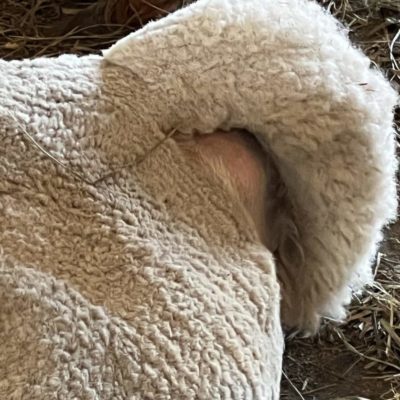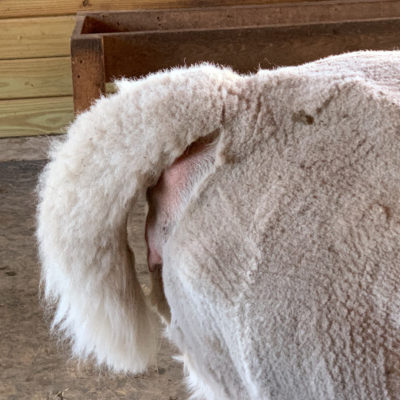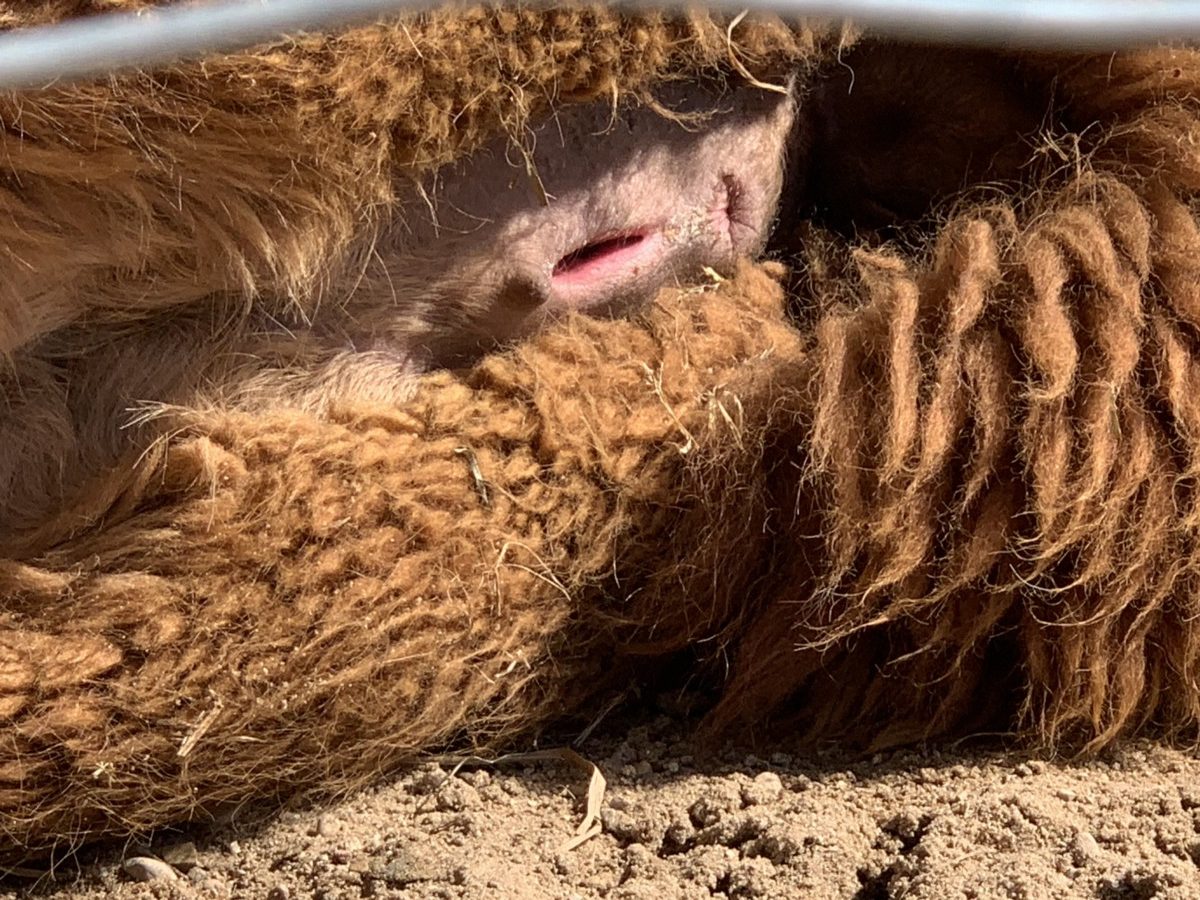You’ve waited over eleven months for your alpaca baby to bake and you’re anxious for the upcoming delivery. But how do you know when your alpaca is ready to begin labor and delivery? Are there clear signs an alpaca is ready to deliver a baby?
Sadly, there are not. But that said, this year I’ve been making notes as we’ve birthed our crias. We’ve had nine births so far this season and I’ve been documenting any signs I noticed, so I can determine if there are some that tend to trend across the herd.
While my list is not scientific, and it is based on my own observations, it can be helpful for new alpaca breeders to ascertain if delivery is imminent.
Two Weeks Before Delivery
We’ve seen a trend in many of our alpaca ladies that starts to happen about two weeks before delivery. The female will act as if they are ready to deliver. You’ll question this because you know it isn’t time yet. The ladies will moan, roll around, and mimic a lot of the same movements of a delivery.
Delivery is not coming at this point, but the baby is moving into position. And if you haven’t gone through this before, you’ll be getting out your birthing kit because you’ll swear a baby is ready to pop out at any moment.
For smaller females, this tends to be more pronounced. This spring our pint-size Dolly was so uncomfortable we loaded her up in my SUV and rushed her to our alpaca vet to make sure we didn’t have a uterine torsion. We did not. Dolly was just struggling with the baby due to her small size.
When Kalista was pregnant with Walter, she threw herself on the barn floor and moaned as if she was dying. At first, we thought she was having a difficult delivery and then we realized she was being a bit of a drama queen as the baby was moving into position. And add in the fact that Kalista is an experienced mom and the entire scene just became funnier and funnier.
The Days Leading Up to Delivery
In the days leading up to the delivery, signs of labor will be different across the ladies. Some alpacas will have lots of birthing signs and some will have virtually no signs. Daisy showed only one sign, High Velocity none, but Dolly, Onyx, and Heartthrob had oodles of signs.
For the ladies that do show signs, here are common signs we tend to see.
Teats enlarge – For some females, their teats will begin filling up with milk, and if you look, you’ll definitely be able to see the baby will be arriving soon. This is harder to see if the female is black or is in full fiber.
Puffy butt – Puffy butt is a nonscientific phrase we use to describe an enlarged back area. In some females, this will pulse and go in and out. And we’ve noticed it tends to be more prevalent in the early evening and night.

Perineal relaxation – This can start weeks or days before the delivery and it can rapidly change in the hours leading up to the delivery. It is only slightly noticeable in the days leading up to delivery and it seems to change based on the position of their body. It is more evident if they are laying down.
Tail up – About half of our alpaca ladies will hold their tails up in the few days prior to delivery. When the tail isn’t held up, they seem to be whipping it around. I have no idea why they do this, but there is a decent percentage of them that do present this behavior.
Baby shifting in position to back – If you keep a close eye on your female alpaca’s back end, you’ll see things shifting as delivery comes close. I don’t even know how to explain it, because all of a sudden I can see everything at the back end and the spine appears different. At times, it looks like there are legs trying to poke their way through the skin and fur. While it probably isn’t this, it is what I think of when I see it.

Moaning – Some ladies suffer in silence and others moan constantly. For the more vocal gals, you’ll hear a lot more moaning in the last day or two. It can come and go or it can be a constant stream of complaining.
Increased Eating – Increased eating a few days prior to delivery seems to happen with almost all of our pregnant alpacas. It seems no matter how much food you give them, it is never enough. I launch into Italian Grandma mode and I want to make sure everyone has access to all the nutrients they need as they lead up to the delivery time.
The Day of Delivery
Most alpacas will deliver during daylight hours. The good news is you’ve typically had your cup of coffee and you’re not yet ready for dinner. As the delivery approaches, there are some clear-cut signs that the baby is coming soon.
Look of fear – This year we had a lot of maidens deliver babies. Each one tended to have a look of fear as the birth was imminent. If you don’t know your alpacas very well, you might not notice this change. If you’re close with your ladies like I am, you can see this fear take over and it is visible on their little faces. I tend to talk to them a lot at this point. The ones who really love me welcome it. The ones who tolerate me look at me with disgust.
Laying on their side – As contractions start the alpacas tend to lay on their sides a lot. They will switch between this position, a traditional cush position, and standing.
Even more perineal relaxation – I mentioned this one above and I’m discussing it again here. While it can start many days before delivery, it take a whole new look right before delivery. I sat with my favorite girl Nibbler the entire day she deliver her first cria. I could see this changing as the hours went on, and sure enough, when it seemed nice and ready, she dropped out her baby in a matter of minutes.

Doesn’t eat with the herd – My husband’s favorite sign of delivery is based all around food. If he goes out to do morning chores and one of our pregnant alpacas doesn’t run to her grain bowl, he knows we have a baby coming. And, for the most part, he is generally right. When they stop eating, the baby starts coming!
Drinks a lot of water – This is something I didn’t notice until this year. We’ve had a hot and dry summer and I think that may have contributed to this sign being a strong signal the baby is coming. If you see your pregnant female visiting the water bowl a lot, take note. There may be a strong chance she’ll be starting her labor and delivery that afternoon.
Pooping a lot – I have about a dozen books on alpacas and all of them reference increased pooping (or trying to poop) as a signal of birth. Yes, it happens, but no it doesn’t happen for every alpaca. We watch for this sign, but it isn’t one I’ve found to be 100% accurate.
Scratching their stomach and back – As contractions start gearing up, so does the scratching of the stomach and back. I always wonder if the pregnant alpacas feel they have a fly on them and really it’s just a contraction. Regardless, I have found this to be an increasing behavior as delivery approaches.
Separation from the herd – When we are reaching the end of delivery preparation, the ladies are tired and they’re anxious. Due to this, they seem to go off on the side of the herd’s activity. Our ladies stay close enough to see what is going on, but far enough away that no one is close enough to bother them.
Immediately Before Delivery
If you’re like me, you’ve been anxiously watching for days. You know every moan, every sign, and you’ve had long talks with the girls about what is coming. I always find myself telling them how excited I am to meet their new baby. Yep, I’m that type of crazy alpaca mom. I can’t help it. I had a very difficult birth with my own daughter, so I feel compelled to try and calm my alpaca girls before delivery.
When labor is active and delivery is near, I have three remaining delivery signs for you.
Panting – When you see your alpaca panting like a dog, it’s time to grab the cria birthing kit. The baby is in the birth canal and it is ready to make it’s grand appearance.
Grunting – As the baby starts to approach moaning turns to grunting. Just like us human ladies in delivery who grunt their way through, alpaca mommas can and will do the same. The bigger the drama queen (I’m looking at your Kalista) the more grunts you’ll hear.
Digging – My final sign is the one that tends to happen minutes to seconds before you see the nose and legs stick out. The pregnant dam will start digging in the dirt (hay or straw) as if she is looking for a softer location for the baby to drop into. I did not notice this behavior until this year, but once I did see it, I now notice it with most births. Keep in mind, that it may only be a second of activity, so it is easy to miss.
And then if everyone goes as it should, you’ll see a nose and then some legs. The baby will look like Superman flying out and arriving in grand style. Some dams deliver laying down, but most deliver standing up.
Once they deliver they tend to walk off, they leave the new baby with the other aunty alpacas, and they then pass the placenta well away from their baby. Once the placenta is passed, they return to start bonding and help their newborn take in the new big world.
The really good mothers will nudge the cria, love on it a bit, and then stand like a statue as the baby stands up to nurse. It can take some babies awhile to figure everything out, but once they do, a good mom will stand ever so patient while the baby takes in milk.
And Then You Celebrate
I absolutely love having babies arrive. It’s a time of celebration and pure joy for me. I can’t help but tell the alpaca momma how good she did, how beautiful her baby is, and how proud I am of her. I know she doesn’t understand my words, but I believe she understands the tone of my voice and she can sense the true love I have for her and her new baby.
We’ve been breeding alpacas for over three years now, and for some reason, we’ve had our share of difficult deliveries, breached deliveries, and emergency trips to the university’s vet hospital. But mixed into all that chaos, we’ve also had a lot of flawless births and beautiful baby alpacas. You have to be prepared for both because you just don’t know what will happen.
I’m thankful for every birth I’ve been part of, every dam I could take care of, and every baby I could help clean. I’ve had afterbirth on my alpaca sweater, delivered babies on Egyptian cotton sheets, and have become the queen of cleaning birthing nastiness out of white clothing. And I’ve loved every minute of the experience.


Thank you so much!! We had our first baby show up about 10 days ago. This was a big surprise as her last lab work in July looked negative. The birth was easy and fast- I guess I was pretty lucky! We have seven alpacas-now8. All girls + Henry (who will be neutered once we figure this whole thing out)
Linda please know that Henry cannot live with the ladies after weening, even if gelded. A gelded alpaca will still perform and he will still cause internal damage if left with the ladies long-term. You need to plan on selling him to another farm or purchase a few males his age to live with once he is past about six months old. While you can keep gelded males with females in other livestock animals, that is not the case with alpacas.
Would it be possible for us to talk one day. I’d love some advise. I’ve had the alpacas about 5 years. I started out with just two girls, I went to get 2 others and then offered 2 girls from a farm that was closing. My farm has been more of a hobby. Now becoming my retirement career. I’ve read bunches but the information but I always seem to missing something. You can email me direct if you’d like
Linda feel free to reach out to me via our contact page. If I can help provide some guidance, I’m happy to do so.
PS: Raising alpacas is a nonstop process of learning. Never feel bad for not knowing everything. Just keep learning and asking questions.
Dear Rebecca,
What do you mean by not possible to keep neutered males and females together? We have been doing so for 12 years (two females with 8 males) and never there has been any problems.
Sasa a gelded male still can obtain an erection, he can still penetrate a female, and he can still chew apart her insides with ongoing breeding. And in the vast majority of the cases, he will because that is what he was meant to do. The female anatomy is not designed for them to live together in that capacity. Just because your males have not caused internal damage does not mean that is the norm or best practice with alpaca husbandry. For every case like yours (where you say it’s been fine) there are hundreds (or thousands more) where it is not. Facebook groups are filled with owners who have done it (without knowing the issue) and their female has had internal damage and died. And alpaca vets can sadly attest to the same.
Really enjoyed your article. I’ve been at it 19 years and have 47 alpacas❣️
Phi Beta Paca™️Alpacas & Yarn
My alpaca pregnant what do
Rachel I would suggest you reach out to the nearest alpaca farms so you have a close by mentor to help and provide advice.
I would also make sure you have an experienced vet lined up in case you run into an emergency.
Finally, I would recommend you purchase a book called “Llama and Alpaca Neonatal Care” which was written by three vets. This will help prepare you and provide instructions for before and aftercare. You can find the book on Amazon or at https://llamaproducts.com/books/neonatal-smith.html.
Have you thought about filming a birth? I love watching Vet. shows.
I have a low quality delivery posted to Facebook a couple of years ago. No sound, but certainly enough to give a good view of the process.
https://www.facebook.com/watch/?v=327571835718568
Hi! We are brand new to llamas and received a female in February. Yesterday we saw something come out of her while urinating and we are being told it was a mucus plug. She does not look pregnant, and we were not told she was but has been eating a lot more lately! Do you know how long after a mucus plug is lost a llama usually goes into labor??
Thank you.
I would defer to a camelid vet or teaching hospital for that question. It is outside by comfort zone to answer.
Thank you so much for this article! We are expecting our first crias soon. Both maidens. Milk bags have started and one had “Poofy Butt” big time yesterday. Their due date is June 2 (at day 315 today). Hoping she (puffy butt) does not deliver too soon and have a preemie. Watching her closely.
You are welcome Ruth! We are on cria watch for a number of late May and early June babies now. It is exciting and exhausting all at once. Enjoy the new babies.
Wonderful advice! Thank you
Hi we just got 2 new alpacas, just got the shearer out and he told me that one has a udder forming how long to delivery please
There isn’t a finite timeframe. It could be days to weeks. They all “bag up” at different levels and timeframes.
Does she have any of the other signs I mention? Do you know if this is her first pregnancy?